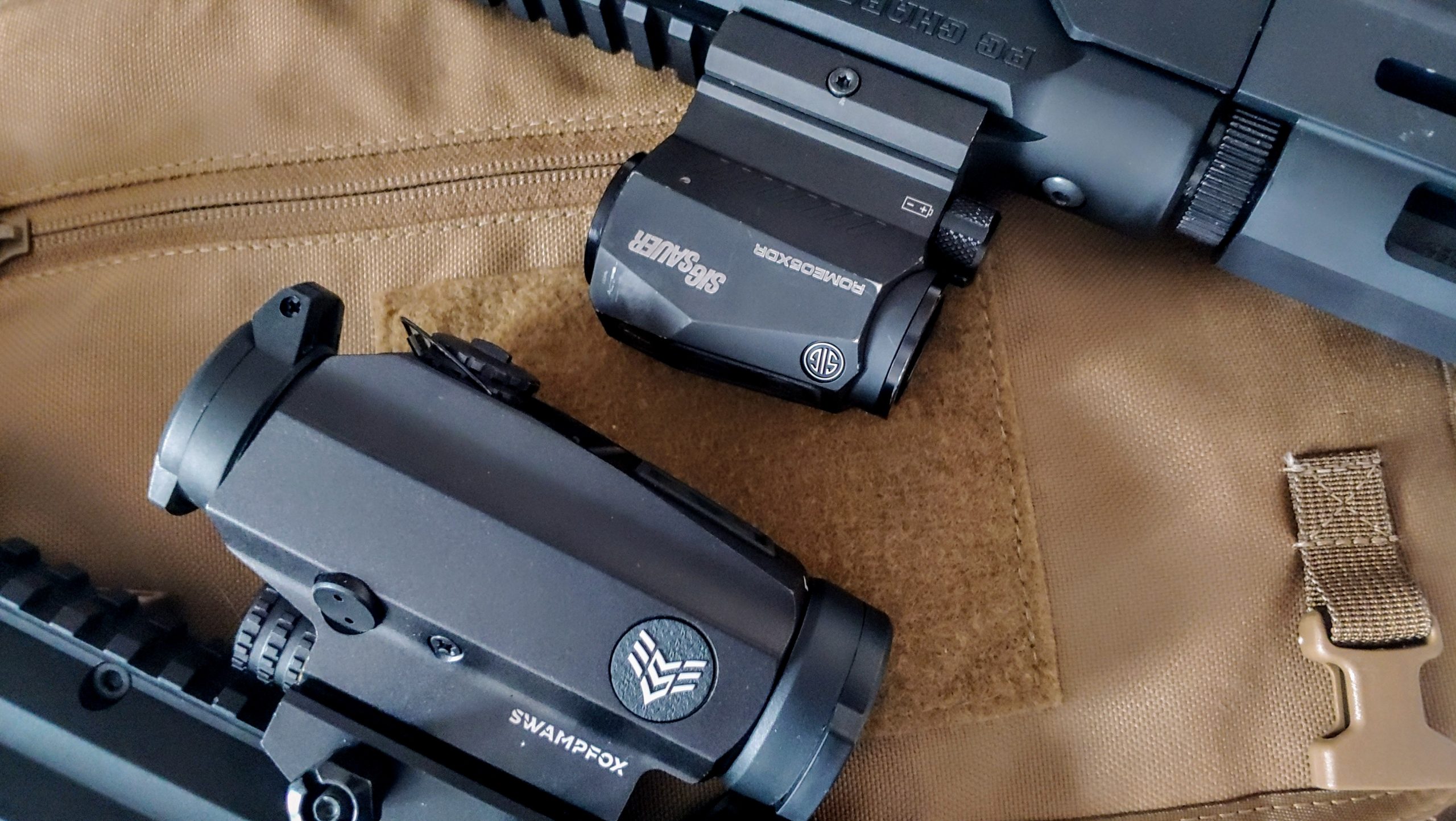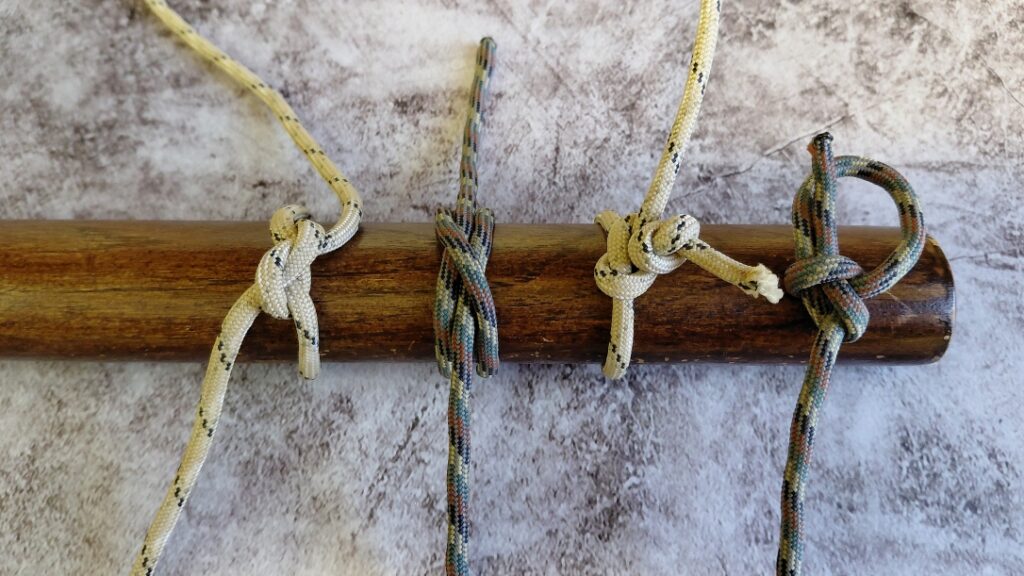Are 1x prism optics better than red dots? I’m beginning to think so. Red dots certainly have their advantages and there are good reasons why red dots are the most common optic on tactical weapons. However, a 1X Prism may be the better option for you.
Red Dot Master Race
Red dots have ruled for so long for several reasons. They have lots of strengths and they’ve been used for decades now with the US Army, the Airforce, and on the patrol rifles of countless police officers.
Why are red dots so popular?
Advertisement — Continue Reading Below
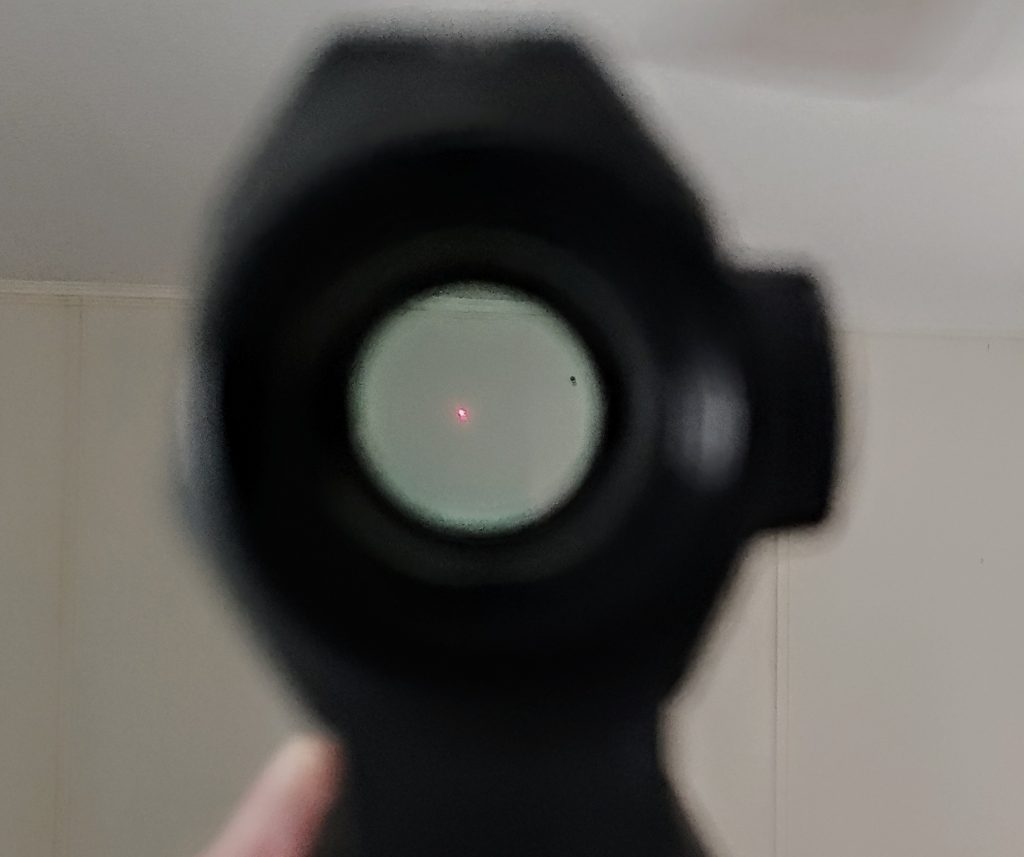
- They vary greatly in size from machine gun sized to handgun sized.
- Red dots can last years on a single battery
- Simple and easy to use
- Many can be combined with a magnifier
- Night vision compatibility
- Unlimited Eye Relief
This makes them awesome tools for duty rifles.
I believe 1X Prism optics offer a number of advantages red dots do not, however.
Advertisement — Continue Reading Below
The 1X Prism
Prism sights are nothing new, and traditionally prism sights are fixed power magnified optics. The most famous is the ACOG with it’s 4X fixed power magnification. Primary Arms Vortex, Steiner and even UTG make prism optics. A few months ago I used to think 1X prism optics were silly.
That changed when I actually used a 1X Prism sight and began to see the immediate benefits of the 1X Prism. My particular model is brand new, not even for sale at the time of this writing. This is the SwampFox Blade 1X Prism sight. Here is the down and dirty of why a 1X Prism won me over.
A Better Reticle and Mechanical Offset
It was perfect timing as I was reviewing the Ruger PC Charger and shooting a lot of close-range speed drills and getting really sick of the old height over bore issue at these close ranges. If you haven’t shot at extremely close ranges with a red dot equipped rifle or subgun you may not have ever experienced the need to compensate for mechanical offset.
Advertisement — Continue Reading Below

Mechanical offset is the distance between your bore and your optic’s aiming point. With any rifle, the mechanical offset will cause you to hit low at close ranges. The closer you are to the target the lower the round will hit until the muzzle can touch the target and the offset on target will be equal to that of the sight over the bore.
Advertisement — Continue Reading Below
The SwampFox Blade offers a reticle that gives you holdovers to compensate for this height overbore. One common theme through prism optics, even 1X prism optics is their ability to use more complicated reticles. That allows for additional options in dealing with offset. This, in turn, allows for precise close-range shooting.
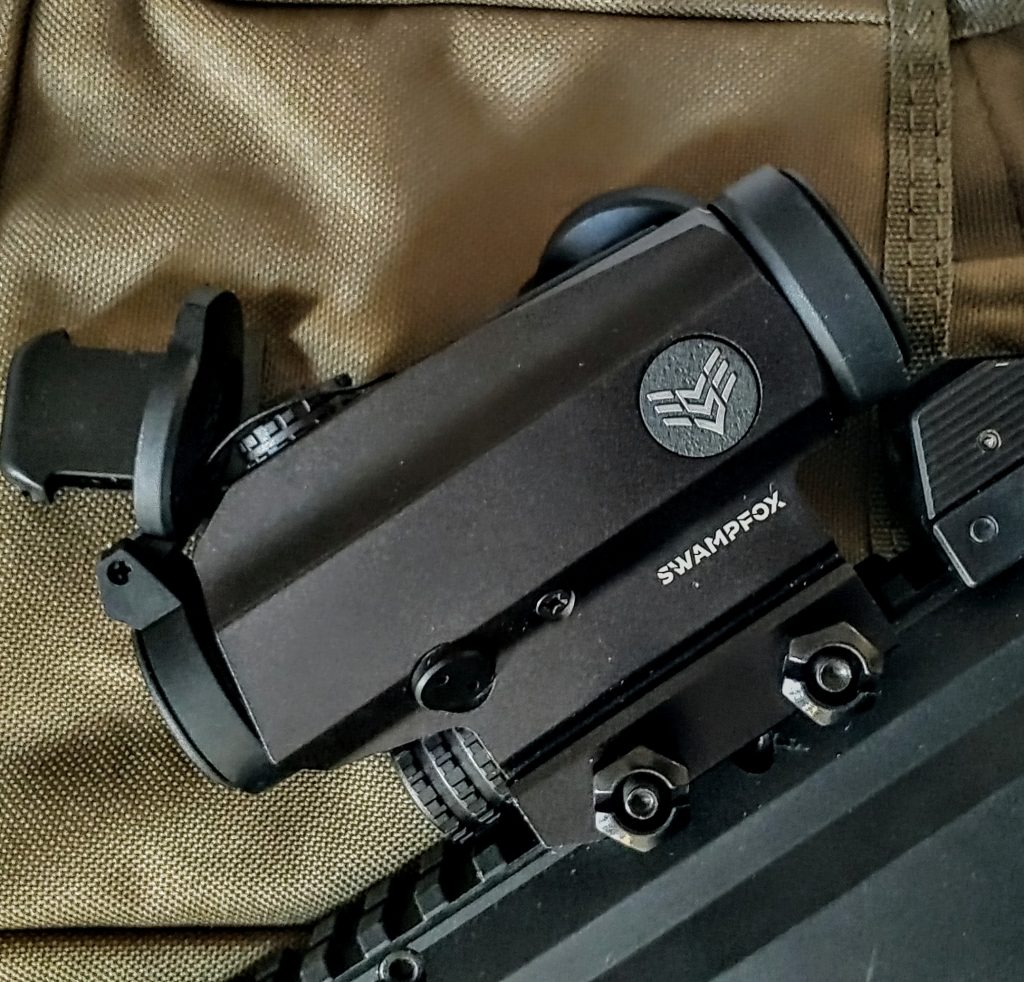
These more complicated reticles allow you to adjust for more than mechanical offset. You can make windage calls, or even use the reticle for ballistic drop compensation.
Advertisement — Continue Reading Below
To Hell With Batteries
Those more complicated reticles are glass etched and if the batteries die or electronics break the reticle is still there. The design for 1X prism sights still emphasizes speed for both close and moderate range shooting. It doesn’t need the illumination.

If you have astigmatism you have likely seen issues using a red dot sight, the distortion in your eye distorts how you see the LED. With a prism sight there is no such worry. It always looks precise without streaks or blurriness because it isn’t a projection.
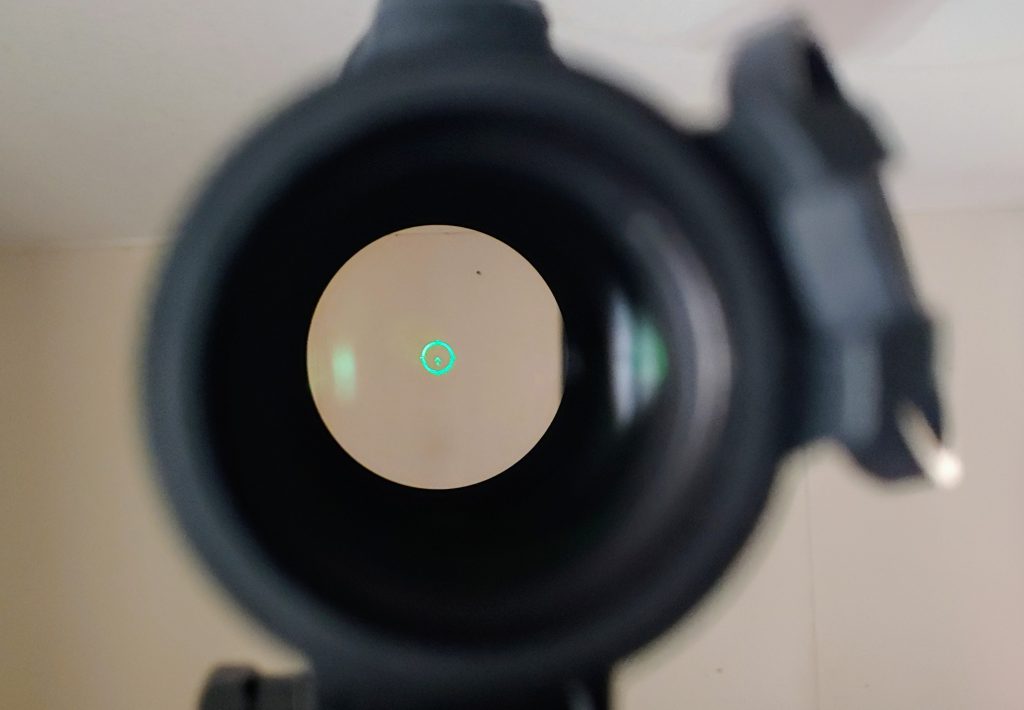
Some 1X Prism sights are compatible with night vision optics. The Vortex Spitfire 1X is reportedly night compatible, as are the mini ACOGs. To be fair the Mini ACOGs are 1.5x optics. The Swampfox Blade is also night vision compatible and a true 1X prism sight.
Advertisement — Continue Reading Below

The Downsides of 1X Prism Sights
They are the same size as a full-sized red dot like the Aimpoint PRO. They also have an eye box, which means you need to have proper eye relief similar to an LPVO, which can make them a hair slower than red dots. If you can live with those, especially if you have eye issues with red dots, a prism sight might do the trick.
Advertisement — Continue Reading Below
